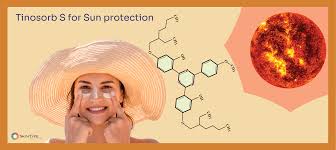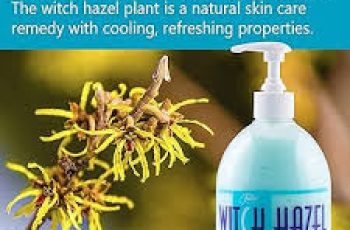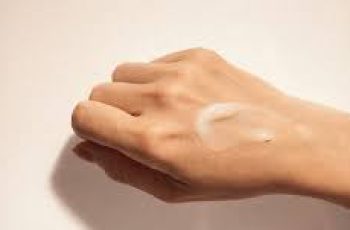
Tinosorb S Sunscreen
New Sunscreen Ingredient: Tinsorb S
In sunny Miami, sun protection isn’t just a seasonal necessity, it’s a daily necessity. As a dermatologist, I know firsthand how the relentless sun can affect skin health.
That’s why the potential U.S. approval of a new sunscreen ingredient long used in Europe, bemotrizinol (Tinosorb S), is great news for anyone seeking broad-spectrum UV protection.
What is Tinosorb S?
Tinosorb S (bis-ethylhexyloxyphenol methoxyphenyl triazine) is an innovative chemical sunscreen ingredient that may soon be found in American sunscreens.
It’s not just a sunscreen, but a safe, broad-spectrum sunscreen that effectively absorbs UVA and UVB rays to prevent sunburn and long-term skin damage.
This new sunscreen reflects some of the UV rays off the skin and converts the rest into harmless heat.
Tinosorb S Names
To find the new sunscreen Tinosorb S, search for the iNCI name “bis-ethylhexyloxyphenol methoxyphenyl triazine.” You will then find this name or Tinosorb S on the product label.
Other names for Tinosorb S are:
2,2′-[6-(4-methoxyphenyl)-1,3,5-triazine-2,4-diyl]bis[5-[(2-ethylhexyl)oxy]-phenol]
Bemotrizinol
Bemotrizinol
Bemotrizinol
Bis-ethylhexyloxyphenol methoxyphenyl triazine
Bis-octyloxyphenol methoxyphenyl triazine
2,2′-[6-(4-methoxyphenyl)-1,3,5-triazine-2,4-diyl]bis[5-[(2-ethylhexyl)oxy]-phenol
Tinosorb
Trianilino-p-carboxyethylhexyl triazine
Uvinol T 150
Safety
Bemotrizinol has been in use in Europe since 2000 and is considered very safe.
It has been rated “1” by the EEC. In 1999, the SCCS confirmed that there was no evidence that the compound was toxic or highly allergenic. (6)
Safety for people
No need to worry about hormonal disruption or skin irritation. Studies have even shown that it causes less contact dermatitis than other similar ingredients.
Safety for marine life and coral reefs
Tinosorb S is not only safe for humans, but also environmentally friendly. It is considered safe for coral reefs, i.e. h.
It does not cause damage to coral reefs, which some other chemical sunscreens can cause serious problems.
Advantages
The new sunscreen Bemotrizinol has received such a warm welcome because it has many advantages and few disadvantages. Its advantages are:
Broadband
Photo sheet
Minimal systemic absorption
Minimal risk of allergies
Tinosorb S provides broad-spectrum protection and effectively covers UVA and UVB rays. Its photostability ensures that it does not degrade in sunlight and provides reliable protection all day long.
In addition, it does not enter the bloodstream, providing additional safety. It is one of the most popular children’s sunscreens in Poland.
Features
This section discusses the issues and drawbacks of many sunscreens. Tinosorb S has the following features:
Coverage: Tinosorb S is not naturally opaque on the skin.
It is transparent and easily incorporated into sunscreen formulations without leaving behind the typical white film associated with physical sunscreens such as zinc oxide or titanium dioxide.
Formulation Challenges: Tinosorb S is relatively easy to formulate with compared to other UV filters.
Its solubility and compatibility with other sunscreens allow it to be incorporated into a variety of sunscreen products, including lotions, creams, and sprays.
It is also used to stabilize other sensitive ingredients, thereby improving the overall formulation.
Comedogenicity: This new sunscreen ingredient does not clog pores, making it suitable for sunscreens for all skin types, including those prone to acne.
It is considered a non-comedogenic sunscreen.
Stinging and Irritation: Tinosorb S does not typically cause stinging or burning when applied to the skin.
Unlike some chemical sunscreens, it does not bind to TRP (transient receptor potential) receptors responsible for mediating sensations such as pain, warmth or itching.
This lack of interaction reduces the risk of irritation that can occur when using other sunscreens.
Disadvantages and Side Effects
Tinosorb S has some side effects:
Eye irritation: Many sunscreens can cause eye irritation. The same problem has been reported with Tinosorb S. Therefore, do not use sprays on your face.
Instead, use creams, lotions and stick skincare products.
Allergic reactions are rare but have been reported.
Mode of Action
Tinosorb S differs from traditional organic sunscreens by having a dual mechanism of action.
Its molecular structure allows it to act as both a UV absorber and a UV reflector, providing comprehensive protection against the entire UV spectrum.
As a UV absorber, Tinosorb S effectively converts UV radiation into harmless heat through the light-induced release and recovery of electrons.
This prevents the radiation from penetrating deep into the skin and causing cell damage. At the same time, its molecular structure is able to scatter and reflect UV rays.
This property is usually associated with physical sunscreens such as zinc oxide or titanium dioxide.
This hybrid functionality not only improves broad-spectrum protection against UVA and UVB rays, but also improves the photostability of the compound.
Ensuring that it maintains its protective effects even after prolonged exposure to sunlight.
In addition, Tinosorb S is highly photostable and resistant to degradation, thus maintaining its effectiveness over a longer period of time.
This stability is particularly important as it allows Tinosorb S to protect against photoaging and photocarcinogenesis, the long-term risks of UV exposure.
The ability to stabilize other sunscreen ingredients also improves the overall effectiveness of the formulation and makes Tinosorb S a valuable ingredient in broad-spectrum sunscreen products.
What wavelengths does it block?
Tinosorb S effectively blocks a wide range of UV wavelengths, providing broad-spectrum protection. Here are the key details:
UVA Protection:
Tinosorb S covers the entire UVA range from 320 nm to 400 nm.
Maximum absorption is around 340 nm, providing reliable protection against deep-penetrating UVA rays that cause skin aging and long-term damage.
UVB Protection:
Tinosorb S also provides comprehensive protection in the UVB range from 280 nm to 320 nm.
It has a distinct absorption peak at 310 nm, which is essential for protection against UVB rays that cause sunburn and direct DNA damage.
This broad-spectrum protection protects against both immediate effects like sunburn, as well as long-term issues like photoaging and skin cancer.
Is Tinosorb S right for your skin type?
Knowing your personal skin type is essential to choosing the right sunscreen. Take the Baumann Skin Type Test to find the best skincare product for your individual situation.
This will ensure you use a sunscreen that meets your skin’s needs while providing the best possible protection against the sun’s harmful rays.
Tinsorb Sunscreen Comparison
Both Tinosorb M and Tinosorb A2B represent advances in sunscreen technology, offering powerful broad-spectrum protection with a safety profile suitable for sensitive skin and pregnancy.
They differ slightly in their specific UV range and formulation properties, but share common advantages in terms of photostability, hypoallergenicity and environmental compatibility.
Tinsorb
Tinosorb M, scientifically known as methylene bis-benzotriazolyl tetramethylbutylphenol (MBBT), is an advanced UV filter with dual protection characteristics that combines organic and inorganic properties.
It absorbs and reflects UV rays, providing broad-spectrum protection against both UVA and UVB rays.
Its uniqueness lies in its microstructure, which allows it to stay on the surface of the skin, thus improving its photostability and effectiveness.
Tinosorb M is known for its minimal skin penetration, reducing concerns about systemic exposure and making it safe to use during pregnancy.
It has not shown any endocrine disrupting effects, which further confirms its safety.
In sunscreen formulations, it is often combined with avobenzone to stabilize avobenzone, thus preventing its rapid degradation in sunlight. This synergistic effect improves photostability.
Although Tinosorb M is hypoallergenic and suitable for sensitive skin, it is not naturally waterproof and may require special formulation adjustments, such as:
B. Addition of film formers to improve water resistance.
In terms of environmental impact, Tinosorb M is considered safe for marine and coral reefs, meeting the growing demand from regulators and consumers for environmentally friendly sunscreen ingredients.
It is approved in Europe, but not in the United States until May 2024.
Tinosorb A2B
Another advanced sunscreen ingredient, Tinosorb A2B further expands the range of UV protection by specifically targeting the UVB and short UVA ranges.
Like Tinosorb M, Tinosorb A2B is photostable and suitable for sensitive skin, even during pregnancy. It does not penetrate the skin, thereby minimizing systemic exposure and associated risks.
In addition, Tinosorb A2B shows no signs of endocrine disruption. Its formulation complements other UV filters, thereby increasing the overall stability and effectiveness of the sunscreen.
The use of Tinosorb A2B in sunscreens helps provide comprehensive protection across a wider range of UV rays, making it a valuable ingredient in full-spectrum sunscreens.
Its efficacy and safety also make it a preferred formulation for protecting sensitive and vulnerable people.
Similar to Tinosorb M, it is considered marine and coral reef safe and meets environmental guidelines and consumer preferences for sunscreens that will not harm aquatic ecosystems.
Tinsorb Type Comparison
When comparing the different Tinsorb types, the available forms differ:
UV protection: Tinosorb A2B offers the broadest protection, effectively blocking both UVB and short UVA rays.
Formula Properties: Tinosorb M can be formulated for increased water resistance, but is not naturally the most water-resistant product.
It forms a micro-fine layer that ensures it adheres to the surface of the skin. However, due to its larger particle size, it tends to be more opaque compared to the other products.
Cosmetic Elegance: Tinosorb S, known for its superior cosmetic elegance, is the most transparent of the three products.
It is therefore preferred for formulations that require minimal visibility on the skin.
Hypoallergenicity: All types of Tinosorb are hypoallergenic in nature, but Tinosorb M mostly stays on the surface of the skin and is considered the product with the lowest probability of causing allergic reactions due to its minimal penetration into the skin.
I hope you enjoyed this blog post. If you have any questions about this article, feel free to ask our Skincare Concierge AI bot.
He can also help you purchase Tinsorb sunscreen once Tinsorb is approved in the United States (hopefully soon).


